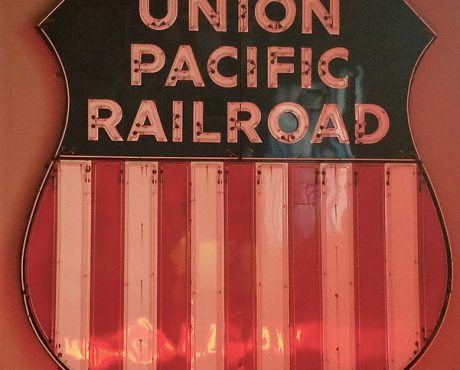Is Union Pacific’s Dividend Safe?
Over the past couple of years, few businesses have delivered better returns than Union Pacific Corporation (NYSE:UNP) stock.
Wall Street has finally caught on to the power of this business. And thanks to an entrenched market position, railroads have emerged as cash cow.
But before buying a stock for a juicy dividend, we have to evaluate a company’s ability to keep making payments over time. And here’s a theme that shows up in a lot of UNP stock news: railroads represent a cyclical business. Profits boom during good times but can sag during an economic slump.
So, could Union Pacific’s dividend get cut in the next recession? Maybe. Management, however, has done a great job shoring up this operation to survive the next downturn.
Railroads represent irreplaceable assets, for starters.
Union Pacific owns over 32,000 route miles of track, covering the western two-thirds of the United States. You would have to spend billions of dollars to replicate this business, assuming you could even acquire the needed right-of-ways. (Source: “Company Overview,” Union Pacific Corporation, last accessed January 24, 2018.)
Also Read:
5 Dividend Stocks For the Next 100 Years
Railroads also enjoy a cost advantage. The industry can ship a ton of freight 470 miles on one gallon of fuel, which is four times more efficient than trucking. So, as long as we ship goods around the country, this business will get a piece of the action. (Source: “Fuel Efficiency,” CSX Corporation, last accessed January 24, 2018.)
For owners, this has created quite the income stream. Union Pacific stock has paid out distributions for over a century, making it one of the oldest dividend payers in the United States. Even though the height of the financial crisis, these payments continued to roll in.
Today, the company’s financial look sound.
Union Pacific covers every dollar in interest expenses with just under $11.20 in profits. This leaves the business arguably underleveraged, especially compared to peers.
Moreover, executives pay out 40% of earnings as dividends. That ratio sits a little higher than at other railroads, but it’s still well within my comfort zone. Management has left themselves plenty of wiggle room to maneuver in the event of a downturn.
| Company |
Yield |
Interest Coverage |
Payout Ratio |
| Union Pacific Corporation (NYSE:UNP) |
1.9% |
11.2 |
40% |
| CSX Corporation (NASDAQ:CSX) |
1.4% |
6.6 |
39% |
| Norfolk Southern Corp. (NYSE:NSC) |
1.6% |
6.8 |
35% |
| Canadian Pacific Railway Limited (NYSE:CP) |
1.0% |
6.0 |
16% |
(Source: Google Finance)
As mentioned above, recessions pose the biggest risk to Union Pacific’s dividend.
Any downturn would reduce the number of freight shipments. A trade war or the end of NAFTA could disrupt supply chains, which would hurt Union Pacific by extension.
That said, analysts don’t seem to worry. The street projects earnings per share to grow at a mid-single-digit clip over the next five years, driven by higher revenues and cost-cutting initiatives. Most of these profits will likely get passed onto shareholders in the form of higher dividends.
Of course, none of this answers the question, “Will Union Pacific stock go up?” If you want to know if Union Pacific stock is a good buy, a deeper analysis would be required. That goes beyond the scope of today’s essay.
This railroad, however, will likely keep cranking out dividends. We can’t call any payout 100% safe, obviously. But if you can spot a reasonably safe distribution, you’re well on your way to identifying a wonderful dividend stock.
